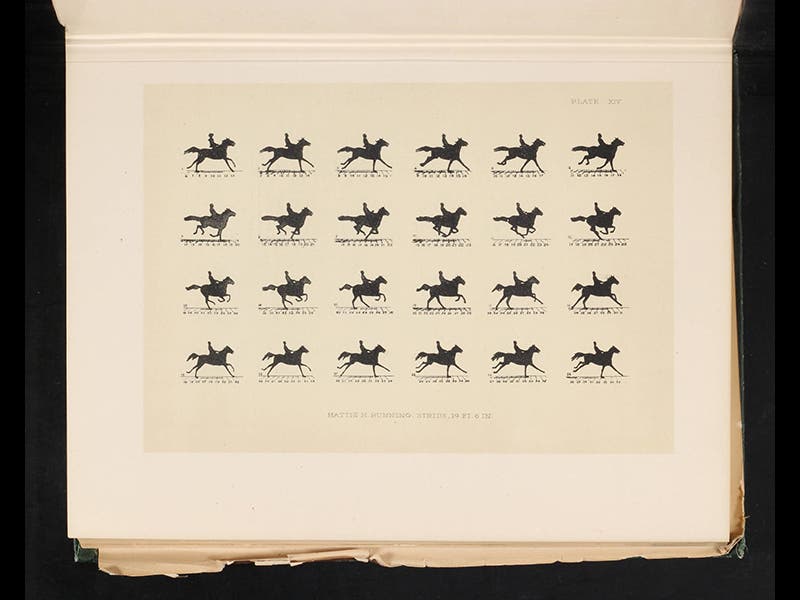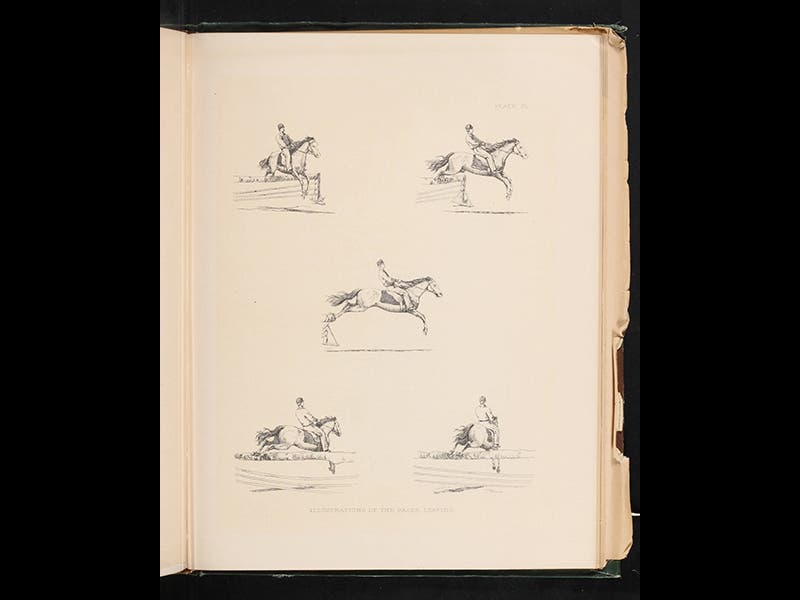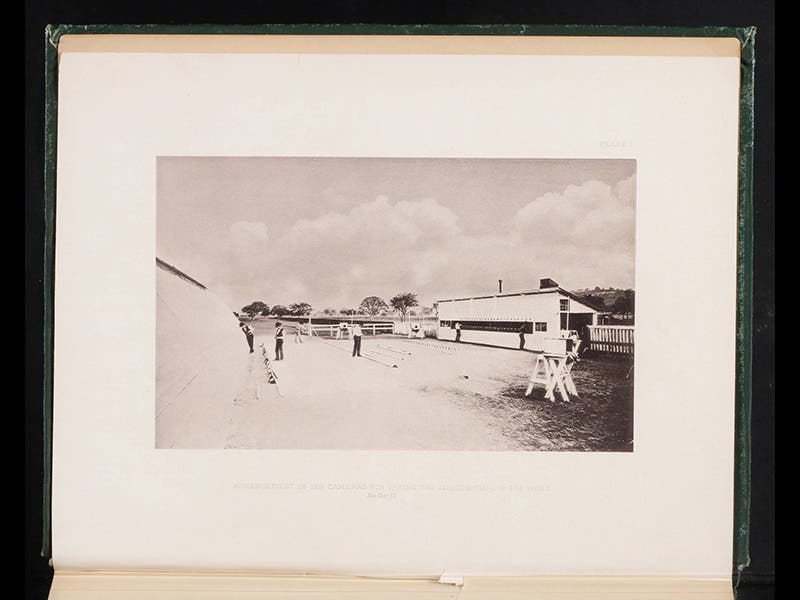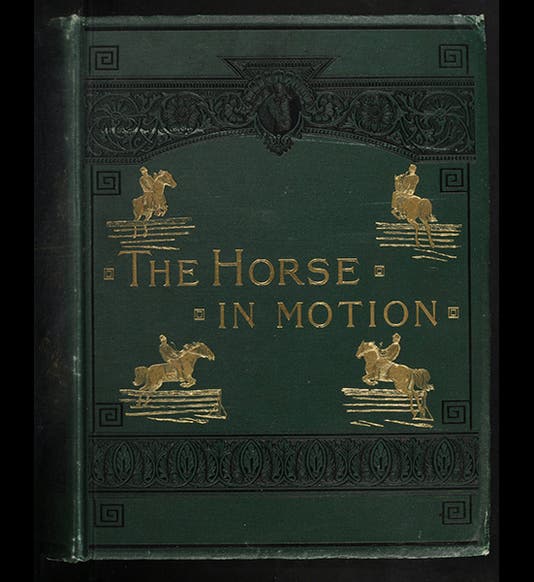Scientist of the Day - Eadweard Muybridge





Thursday, Apr. 9, 2015:
Eadweard Muybridge – Scientist of the Day
Eadweard Muybridge, an English photographer, was born Apr. 9, 1830. Muybridge journeyed to the American West in 1867 and took photographs of such places as Yosemite. His work came to the attention of Leland Stanford, California businessman and avid racehorse breeder, who had an obsession: he wanted to know whether a horse, when it ran, ever had all four legs off the ground, as often portrayed by painters. In 1872, Stanford engaged the services of Muybridge, who set up a series of 24 cameras and was able to take multiple shots of the running habits of Stanford's various racehorses, in a kind of film-strip style. The photographs demonstrated that all four legs often left the ground, although not as artists had depicted them, with the legs stretched out fore and aft, but rather with the four legs tucked up under the horse.
Stanford was so pleased that he engaged a writer, J.D.B. Stillman, to compile a book, The Horse in Motion, which was published in 1882, and which shows many of Muybridge's film-strips of assorted walking, trotting, and galloping horses. The Horse in Motion is a beautiful large quarto, with jumping horses embossed in gold on the dark green cloth of the binding (first image above); we have a copy in the History of Science Collection, from which our images were taken, including a montage of a horse running (second image), a horse breaking from a trot to a run (third image), and one of a group of plates illustrating the paces for dressage, this one “leaping” (fourth image). In addition, the frontispiece of the book shows how the cameras were set up to catch a sequence of photographs as a horse ran or trotted or cantered by (fifth image)
One contributing factor in the long delay in the publication of the book was no doubt Muybridge's trial for murder after he shot and killed his wife's lover in 1874. The act was ruled "justifiable homicide."
Dr. William B. Ashworth, Jr., Consultant for the History of Science, Linda Hall Library and Associate Professor, Department of History, University of Missouri-Kansas City






